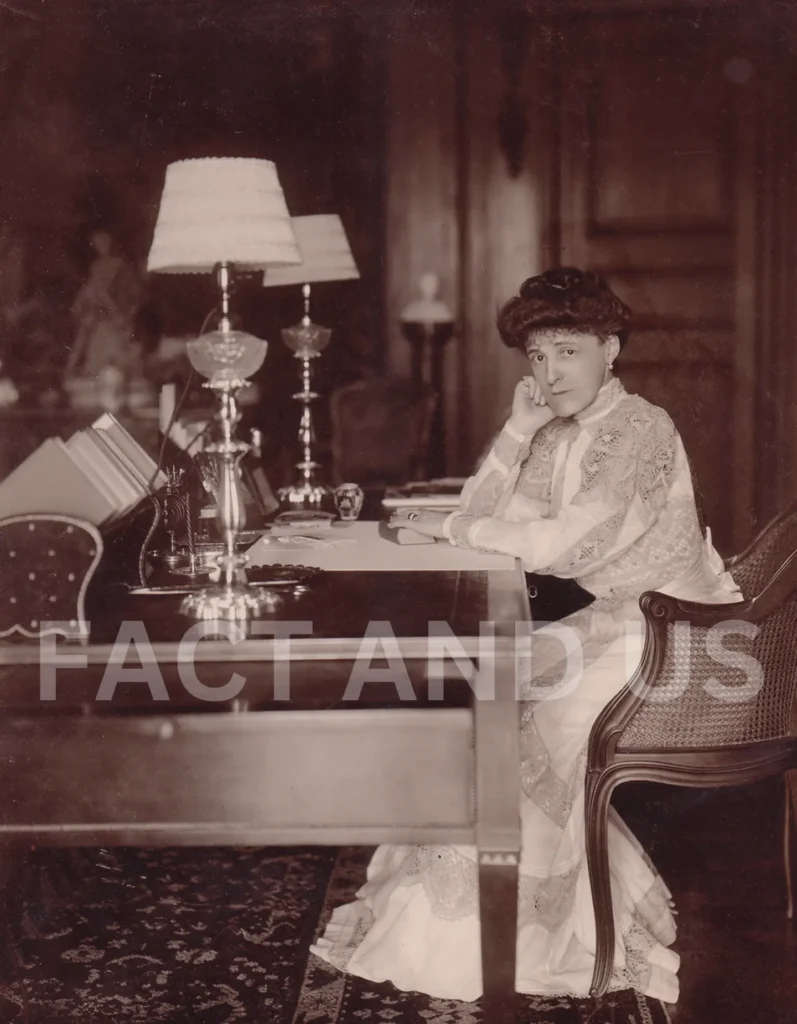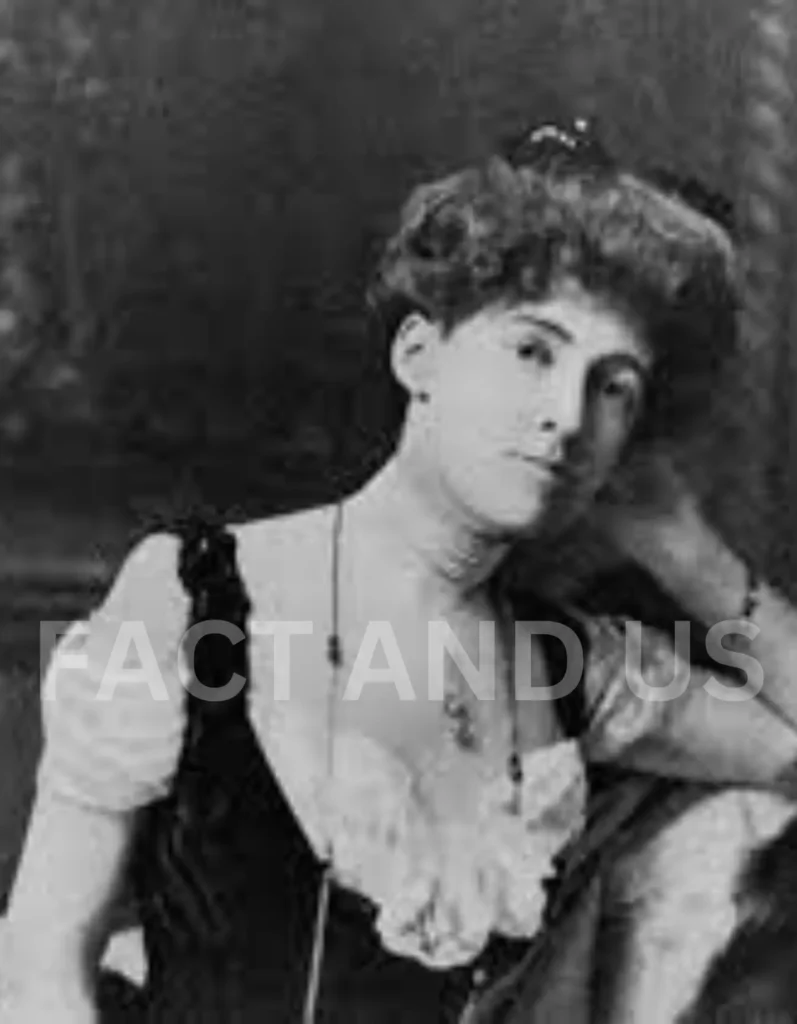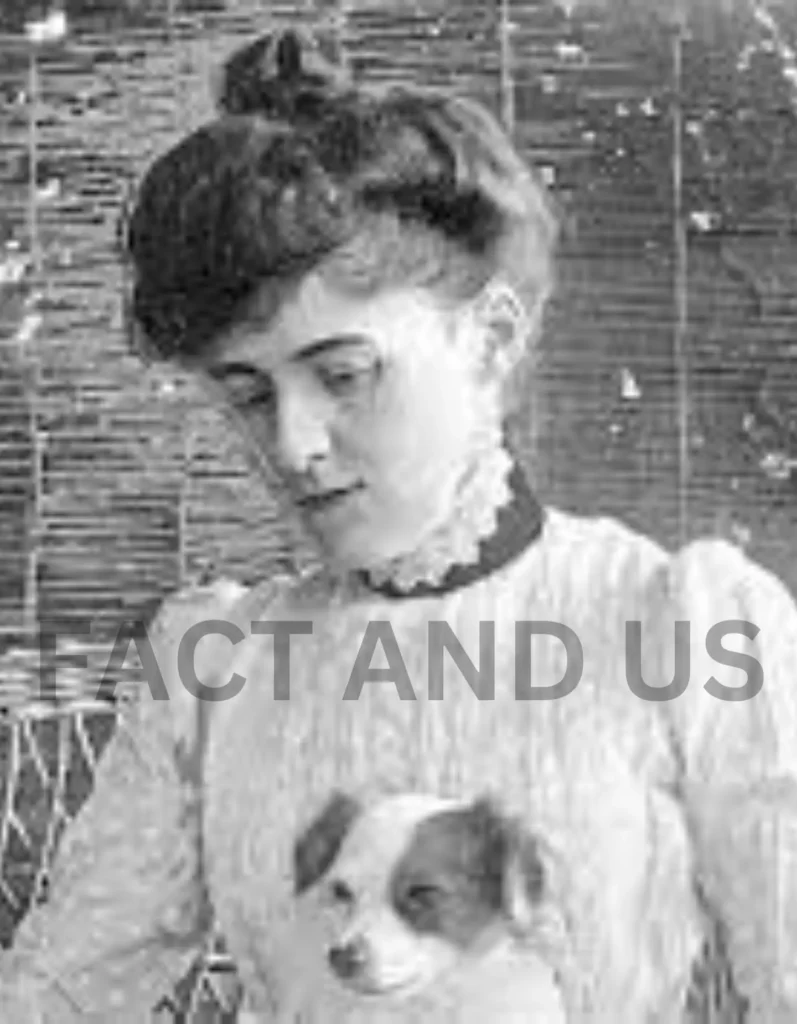Edith Wharton (born January 24, 1862, New York, New York, U.S.—died August 11, 1937, Saint-Brice-sous-Forêt, near Paris, France) was an American author best known for her stories and novels about the upper-class society into which she was born. Edith Jones came of a distinguished and long-established New York family. She was educated by private tutors and governesses at home and in Europe, where the family resided for six years after the American Civil War, and she read voraciously. She made her debut in society in 1879 and married Edward Wharton, a wealthy Boston banker, in 1885.Although she had had a book of her own poems privately printed when she was 16, it was not until after several years of married life that Wharton began to write in earnest. Her major literary model was Henry James, whom she knew, and her work reveals James’s concern for artistic form and ethical issues. She contributed a few poems and stories to Harper’s, Scribner’s, and other magazines in the 1890s, and in 1897, after overseeing the remodeling of a house in Newport, Rhode Island, she collaborated with the architect Ogden Codman, Jr., on The Decoration of Houses. Her next books, The Greater Inclination (1899) and Crucial Instances (1901), were collections of stories.

Contents
Edith Wharton
Wharton’s first novel, The Valley of Decision, was published in 1902. The House of Mirth (1905) was a novel of manners that analyzed the stratified society in which she had been reared and its reaction to social change. The book won her critical acclaim and a wide audience. In the next two decades—before the quality of her work began to decline under the demands of writing for women’s magazines—she wrote such novels as The Reef (1912), The Custom of the Country (1913), Summer (1917), and The Age of Innocence (1920), which won a Pulitzer Prize. The Age of Innocence presents a picture of upper-class New York society in the 1870s. In the story, Newland Archer is engaged to May Weiland, a beautiful but proper fellow member of elite society, but he falls deeply in love with Ellen Olenka, a former member of their circle who has returned to New York to escape her disastrous marriage to a Polish nobleman. Both lovers prove too obedient to conventional taboos to break with their upper-class social surroundings, however, and Newland feels compelled to renounce Ellen and marry May.
Wharton’s best-known work is the long tale Ethan Frame (1911), which exploits the grimmer possibilities of the New England farm life she observed from her home in Lenox, Massachusetts. The protagonist, the farmer Ethan Frame, is married to a whining hypochondriac but falls in love with her cousin, Mattie. As she is forced to leave his household, Frame tries to end their dilemma by steering their bobsled into a tree, but he ends up only crippling Mattie for life. They spend the rest of their miserable lives together with his wife on the farm. Wharton’s short stories, which appeared in numerous collections, among them Xingu and Other Stories (1916), demonstrate her gifts for social satire and comedy, as do the four novelettes collected in Old New York (1924). Her 1915 reporting for Scribner’s Magazine on the Western Front in World War I was collected as Fighting France: From Dunkerque to Belfort (1918). In her manual The Writing of Fiction (1925) she acknowledged her debt to Henry James. Among her later novels are Twilight Sleep (1927), Hudson River Bracketed (1929), and its sequel, The Gods Arrive (1932). Her autobiography, A Backward Glance, appeared in 1934. In all Wharton published more than 50 books, including fiction, short stories, travel books, historical novels, and criticism.
She lived in France after 1907, visiting the United States only at rare intervals. She was divorced from her husband in 1913 and was a close friend of novelist James in his later years.
Biography Early life

Edith Wharton was born Edith Newbold Jones on January 24, 1862, to George Frederic Jones and Lucretia Stevens Rhinelander at their brownstone at 14 West Twenty-third Street in New York City. To her friends and family she was known as “Pussy Jones”. She had two elder brothers, Frederic Rhinelander and Henry Edward. [2] Frederic married Mary Cadwallader Rawle; their daughter was landscape architect Beatrix Farrand. Edith was baptized April 20, 1862, Easter Sunday, at Grace Church.
Wharton’s paternal family, the Joneses, were a very wealthy and socially prominent family having made their money in real estate. The saying “keeping up with the Joneses” is said to refer to her father’s family. She was related to the Rensselaer’s, the most prestigious of the old patroon families, who had received land grants from the former Dutch government of New York and New Jersey. Her father’s first cousin was Caroline Schermerhorn Astor. Fort Stevens in New York was named for Wharton’s maternal great-grandfather, Ebenezer Stevens, a Revolutionary War hero and general.
Wharton was born during the Civil War; however, in describing her family life Wharton does not mention the war except that their travels to Europe after the war were due to the depreciation of American currency. From 1866 to 1872, the Jones family visited France, Italy, Germany, and Spain. During her travels, the young Edith became fluent in French, German, and Italian. At the age of nine, she suffered from typhoid fever, which nearly killed her, while the family was at a spa in the Black Forest. After the family returned to the United States in 1872, they spent their winters in New York City and their summers in Newport, Rhode Island. While in Europe, she was educated by tutors and governesses. She rejected the standards of fashion and etiquette that were expected of young girls at the time, which were intended to allow women to marry well and to be put on display at balls and parties. She considered these fashions superficial and oppressive. Edith wanted more education than she received, so she read from her father’s library and from the libraries of her father’s friends. Her mother forbade her to read novels until she was married, and Edith obeyed this command.
Early Writing

Wharton wrote and told stories from an early age. When her family moved to Europe and she was just four or five she started what she called “making up.” She invented stories for her family and walked with an open book, turning the pages as if reading while improvising a story. Wharton began writing poetry and fiction as a young girl, and attempted to write her first novel at the age of Her mother’s criticism quashed her ambition and she turned to poetry. She was 15 years old when her first published work appeared, a translation of a German poem “Was die Steinem Ebrahem” (“What the Stones Tell”) by Heinrich Karl Brosch, for which she was paid $50. Her family did not want her name to appear in print since writing was not considered a proper occupation for a society woman of her time. Consequently, the poem was published under the name of a friend’s father, E. A. Washburn, a cousin of Ralph Waldo Emerson who supported women’s education.In 1877, at the age of 15, she secretly wrote a novella, Fast and Loose. In 1878, her father arranged for a collection of two dozen original poems and five translations, Verses, to be privately published. Wharton published a poem under a pseudonym in the New York World in 1879.In 1880, she had five poems published anonymously in the Atlantic Monthly, an important literary magazine. Despite these early successes, she was not encouraged by her family or her social circle, and though she continued to write, she did not publish anything more until her poem “The Last Giustiniani” was published in Scribner’s Magazine in October 1889.
Travels and Life Abroad
Over the course of her life, she crossed the Atlantic 60 times. In Europe, her primary destinations were Italy, France, and England. She also went to Morocco. She wrote many books about her travels, including Italian Backgrounds and A Motor-Flight through France.
Her husband Edward Wharton shared her love of travel and for many years they spent at least four months of each year abroad, mainly in Italy. Their friend Egerton Winthrop accompanied them on many journeys there. In 1888, the Whartons and their friend James Van Alen took a cruise through the Aegean islands. Wharton was 26. The trip cost the Whartons $10,000 and lasted four months. She kept a travel journal during this trip that was thought to be lost but was later published as The Cruise of the Vadnais, now considered her earliest known travel writing.
In 1897, Edith Wharton purchased Land’s End in Newport, Rhode Island, from Robert Livingston Beekman, a former U.S. Open Tennis Championship runner-up who became governor of Rhode Island. At the time, Wharton described the main house as “incurably ugly”. Wharton agreed to pay $80,000 for the property, and spent thousands more to alter the home’s facade, decorate the interior, and landscape the grounds. In 1902, Wharton designed The Mount, her estate in Lenox, Massachusetts, which survives today as an example of her design principles. She wrote several of her novels there, including The House of Mirth (1905), the first of many chronicles of life in old New York. At The Mount, she entertained the cream of American literary society, including her close friend, novelist Henry James, who described the estate as “a delicate French chateau mirrored in a Massachusetts pond”. Although she spent many months traveling in Europe nearly every year with her friend, Egerton Winthrop (a descendant of John Winthrop), The Mount was her primary residence until 1911.When living there and while traveling abroad, Wharton was usually driven to appointments by her longtime chauffeur and friend Charles Cook, a native of nearby South Lee, Massachusetts. When her marriage deteriorated, she decided to move permanently to France, living first at 53 Rue de Varennes, Paris, in an apartment that belonged to George Washington Vanderbilt.
Edith Wharton: Quotes
Culture
Mrs. Ballinger is one of the ladies who pursue Culture in bands, as though it were dangerous to meet it alone.
Edith Wharton
Silence
Silence may be as variously shaded as speech.
Edith Wharton: The Reef
Career
Despite not publishing her first novel until she was forty, Wharton became an extraordinarily productive writer. In addition to her 15 novels, seven novellas, and eighty-five short stories, she published poetry, books on design, travel, literary and cultural criticism, and a memoir.
In 1873, Wharton wrote a short story and gave it to her mother to read. Stinging from her mother’s critique, Wharton decided to write only poetry. While she constantly sought her mother’s approval and love, she rarely received either, and their relationship was a troubled one. Before she was 15, Wharton wrote Fast and Loose (1877). In her youth, she wrote about society. Her central themes came from her experiences with her parents. She was very critical of her work and wrote public reviews criticizing it. She also wrote about her own experiences with life. “Intense Love’s Utterance” is a poem written about Henry Stevens.
In 1889, she sent out three poems for publication, to Scribner’s, Harper’s and Century. Edward L. Burlingame published “The Last Giusti Niani” for Scribner’s. It was not until Wharton was 29 that her first short story was published: “Mrs. Mainstay’s View” had very little success, and it took her more than a year to publish another story. She completed “The Fullness of Life” following her annual European trip with Teddy. Burlingame was critical of this story but Wharton did not want to make edits to it. This story, along with many others, speaks about her marriage. She sent Buner Sisters to Scribner’s in 1892. Burlingame wrote back that it was too long for Scribner’s to publish. This story is believed to be based on an experience she had as a child. It did not see publication until 1916 and is included in the collection called Xingu. After a visit with her friend, Paul Bourget, she wrote “The Good May Come” and “The Lamp of Psyche”. “The Lamp of Psyche” was a comical story with verbal wit and sorrow. After “Something Exquisite” was rejected by Burlingame, she lost confidence in herself. She started travel writing in 1894.
Additional Reading
Biographies include R.W.B. LEWIS, Edith Wharton (1975, reprinted 1985); ELEANOR DWIGHT, Edith Wharton: An Extraordinary Life (1994); SHARI BENSTOCK, No Gifts from Chance (1994); SUSAN GOODMAN, Edith Wharton’s Inner Circle (1994); and HERMIONE LEE, Edith Wharton (2007). Analyses of Wharton’s work are found in BARBARA A. WHITE, Edith Wharton: A Study of the Short Fiction (1991); CAROL J. SINGLEY, Edith Wharton: Matters of Mind and Spirit (1995); and CYNTHIA GRIFFIN WOLFF, A Feast of Words: The Triumph of Edith Wharton, 2nd ed. (1995).
Themes
Versions of her mother, Lucretia Jones, often appeared in Wharton’s fiction. Biographer Hermione Lee described it as “one of the most lethal acts of revenge ever taken by a writing daughter.” In her memoir, A Backward Glance, Wharton describes her mother as indolent, spendthrift, censorious, disapproving, superficial, icy, dry and ironic. Wharton’s writings often dealt with themes such as “social and individual fulfillment, repressed sexuality, and the manners of old families and the new elite. “Maureen Howard, editor of Edith Wharton: Collected Stories, notes several recurring themes in Wharton’s short stories, including confinement and attempts at freedom, the morality of the author, critiques of intellectual pretension, and the “unmasking” of the truth.Wharton’s writing also explored themes of “social mores and social reform” as they relate to the “extremes and anxieties of the Gilded Age”.
A key recurring theme in Wharton’s writing is the relationship between the house as a physical space and its relationship to its inhabitant’s characteristics and emotions. Maureen Howard argues “Edith Wharton conceived of houses, dwelling places, in extended imagery of shelter and dispossession. Houses – their confinement and their theatrical possibilities … they are never mere settings.
Influences
American children’s stories containing slang were forbidden in Wharton’s childhood home. This included such popular authors as Mark Twain, Bret Harte, and Joel Chandler Harris. She was allowed to read Louisa May Alcott but Wharton preferred Lewis Carroll’s Alice’s Adventures in Wonderland and Charles Kingsley’s The Water-Babies, A Fairy Tale for a Land Baby. Wharton’s mother forbade her from reading many novels and Wharton said she “read everything else but novels until the day of my marriage.” Instead Wharton read the classics, philosophy, history, and poetry in her father’s library including Daniel Defoe, John Milton, Thomas Carlyle, Alphonse de Lamartine, Victor Hugo, Jean Racine, Thomas Moore, Lord Byron, William Wordsworth, John Ruskin, and Washington Irving. Biographer Hermione Lee describes Wharton as having read herself “out of Old New York” and her influences included Herbert Spencer, Charles Darwin, Friedrich Nietzsche, T. H. Huxley, George Romanes, James Frazer, and Thorstein Veblen. These influenced her ethnographic style of novelization. Wharton developed a passion for Walt Whitman.
Edith Wharton: Facts & Related Content
Facts
Also Known As Edith Newbold Jones
Born January 24, 1862 • New York City • New York
Died August 11, 1937 (aged 75) • France
Awards And Honors Pulitzer Prize
Notable Works “A Backward Glance” • “Crucial Instances” • “Ethan Frome” • “Fighting France: From Dunkerque to Belfort” • “The Gods Arrive” • ”Hudson River Bracketed” • “Old New York” • “The Age of Innocence” • “The Custom of the Country” • “The House of Mirth” • “The Valley of Decision” • “Twilight Sleep” • “Xingu and Other Stories”
Stay connected with Fact and US for more such news.
